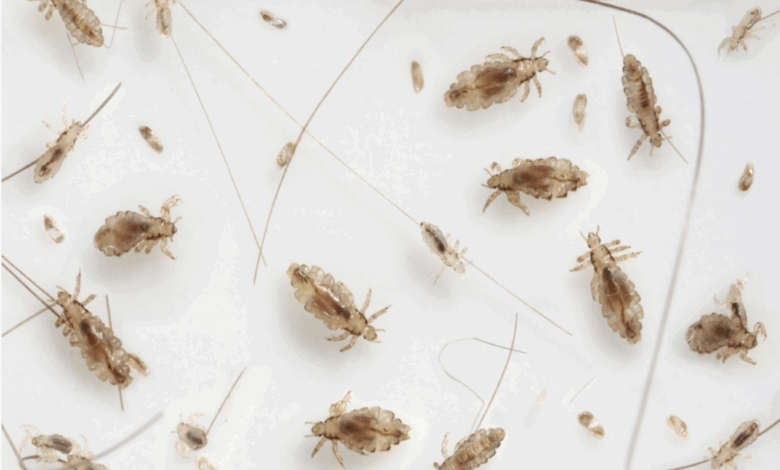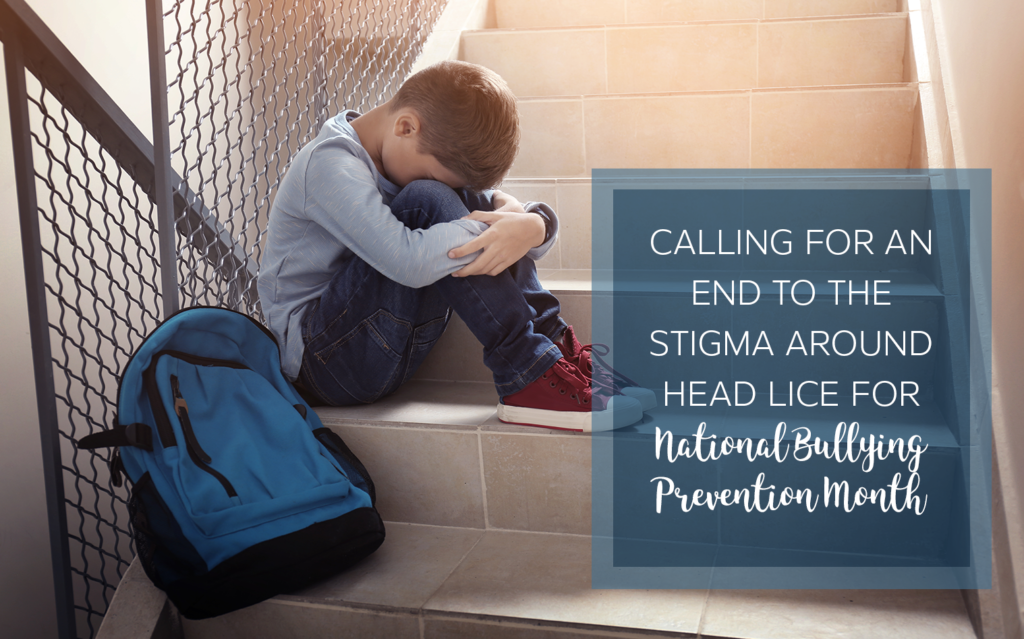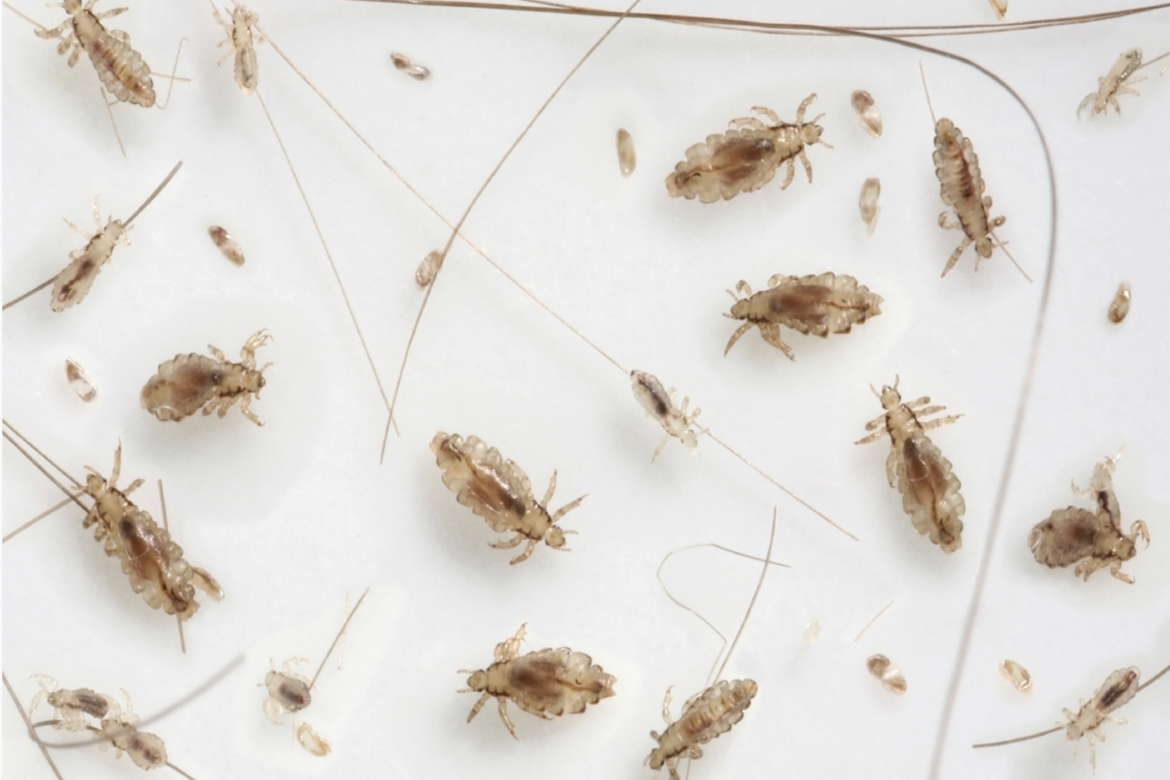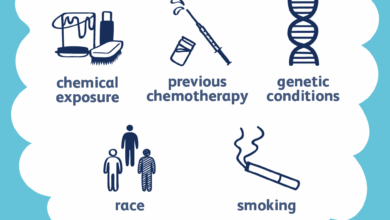
Tackling the stigma of head lice is crucial for creating a supportive environment for those affected. This issue goes far beyond a simple health concern; it’s deeply rooted in societal perceptions and historical contexts. Understanding the social and emotional impact of this stigma on individuals and families is vital to fostering empathy and compassion. From the historical context to cultural variations, this exploration will delve into the complexities of this often-overlooked issue.
The stigma surrounding head lice often stems from misinformation and myths, perpetuating negative perceptions. Media portrayals, social pressures, and even socioeconomic factors contribute to this negative narrative. This discussion will examine the reasons behind this negative perception, highlighting the harmful effects on individuals and families, and ultimately, offering strategies for change.
Understanding the Stigma
Head lice infestations are a common, often temporary, condition. However, the stigma surrounding them can significantly impact individuals and families. This stigma, rooted in societal perceptions and historical contexts, often leads to feelings of shame, embarrassment, and isolation. Understanding this stigma is crucial to developing effective interventions and promoting a more supportive environment for those affected.The stigma associated with head lice is multifaceted.
It encompasses social judgment, discrimination, and emotional distress. This stigma manifests in various ways, affecting both the individual experiencing the infestation and their family. This is not just about physical discomfort; it’s about the emotional burden placed on individuals and the social barriers they face.
Defining the Stigma
The stigma surrounding head lice is a negative social judgment associated with the condition. It’s characterized by shame, embarrassment, and the perception that those with head lice are somehow unclean or less hygienic. This judgment can extend to the families of those affected, leading to additional stress and isolation.
Social and Emotional Impact
The social and emotional impact of this stigma is significant. Individuals experiencing head lice infestations may face social exclusion, teasing, and bullying. This can lead to feelings of shame, embarrassment, and low self-esteem. Families may experience similar negative reactions, facing judgment and social isolation. These feelings can impact academic performance, social interactions, and overall well-being.
For example, a child experiencing bullying due to a head lice infestation might exhibit anxiety or reluctance to attend school.
Historical Context and Evolution
The stigma associated with head lice has evolved over time, often intertwined with societal perceptions of cleanliness and hygiene. Historically, head lice were often linked to poverty and unsanitary conditions. This association has contributed to the development of the stigma we see today. While the medical understanding of head lice has advanced, the societal perception hasn’t always kept pace.
Comparison to Other Health Conditions
The stigma associated with head lice can be compared to other health conditions that are similarly misunderstood. For example, mental health conditions, while often more severe in their impact, share a similar pattern of social judgment and isolation. However, the severity of the stigma and its impact can vary significantly depending on the specific condition and cultural context.
Cultural Variations
Cultural perceptions of head lice vary considerably. In some cultures, head lice are viewed as a minor inconvenience, while in others, they are associated with serious social issues. These variations highlight the role of cultural norms in shaping perceptions of health conditions. For example, in some communities, head lice are perceived as a sign of uncleanliness, while in others, they are seen as a common and easily treatable condition.
Manifestations of Stigma, Tackling the stigma of head lice
| Cultural Context | Manifestations of Stigma | Impact |
|---|---|---|
| Western Cultures | Exclusion from social activities, teasing, bullying, discrimination in schools, and avoidance by peers. | Low self-esteem, anxiety, reluctance to attend school, social isolation. |
| Some Asian Cultures | Internalized shame, fear of being ostracized by family and community, avoidance of social interactions, and stigmatizing language used within the family. | Social isolation, emotional distress, potential for strained family relationships. |
| Certain Religious Communities | Potential for religious beliefs or practices to reinforce existing stigmas, leading to additional shame and isolation, as well as possible conflicts with community norms. | Internalized shame, difficulty seeking help or treatment. |
Causes and Contributing Factors

The stigma surrounding head lice is a complex issue rooted in a multitude of factors. It’s not simply a matter of hygiene or cleanliness; instead, deeply ingrained societal perceptions and historical context play a significant role in how head lice are viewed. This stigma, unfortunately, often leads to feelings of shame, embarrassment, and isolation for those affected. Understanding the underlying causes can pave the way for a more empathetic and informed approach.Negative perceptions of head lice are often fueled by misconceptions and anxieties.
These anxieties can stem from various sources, including past experiences, cultural norms, and the way the issue is presented in the media. The result is a cycle of fear and judgment that needs to be broken down to address the problem effectively.
Reasons Behind the Negative Perception
The negative perception of head lice often stems from the association with poor hygiene or social standing. Historically, head lice have been linked to poverty and unsanitary conditions, perpetuating a cycle of judgment and prejudice. This association, although often inaccurate, persists in many societies. Furthermore, the fear of social ostracism and the perceived inconvenience of treatment further contribute to the stigma.
Role of Misinformation and Myths
Misinformation and myths surrounding head lice contribute significantly to the stigma. Many believe that head lice are a sign of poor hygiene, a misconception that often lacks factual basis. The reality is that head lice are a common, easily treatable condition, not an indicator of poor character. This inaccurate belief is often amplified by outdated or inaccurate information, leading to unwarranted judgments.
Media Portrayals and the Stigma
Media representations often play a role in perpetuating the stigma. Oversimplified or sensationalized portrayals of head lice infestations can create a fear-based narrative. For example, media outlets may focus on the discomfort or inconvenience of treatment without providing a balanced perspective that highlights the common nature of the condition. Such skewed representations can contribute to a negative perception and perpetuate harmful stereotypes.
Social Pressures and the Stigma
Social pressures significantly contribute to the stigma. Fear of judgment from peers, teachers, or other social circles can discourage individuals from seeking help or discussing the issue openly. This fear of social isolation can result in a cycle of secrecy and shame. A culture that prioritizes appearances over health and well-being exacerbates this issue.
Fighting the stigma around head lice is crucial. It’s a common childhood issue, and often treated with shame, which can make it harder to deal with. Luckily, checking out my favorite healthy finds 2, favorite healthy finds 2 , has some great tips for managing all kinds of worries. This can help reduce the stress surrounding the whole situation and normalize the experience, which will help in the long run when addressing the issue head-on.
Societal Factors Fueling the Stigma
- Cultural Norms and Values: Certain cultural norms might associate head lice with lower social status or lack of hygiene. This perception can result in the stigmatization of individuals who experience head lice.
- Emphasis on Appearance: A society that values appearance over health can inadvertently contribute to the stigma. The fear of being judged based on appearance can lead to reluctance to seek help or discuss the issue openly.
- Lack of Open Communication: Limited open communication about head lice within families and communities can perpetuate the stigma. This lack of awareness and discussion can reinforce misconceptions and fears.
Socioeconomic Factors and the Head Lice Experience
Socioeconomic factors significantly impact the experience of head lice. Individuals from lower socioeconomic backgrounds may face greater challenges in accessing effective treatments or resources for managing the condition. The perceived link between head lice and poverty further compounds the stigma, creating a cycle of disadvantage. This disparity in access to resources can lead to a greater burden on those who are already struggling financially.
This further highlights the need for a broader societal approach to addressing head lice, focusing on equitable access to information and treatment for all individuals.
Impact on Individuals and Families
The stigma surrounding head lice often extends beyond the immediate discomfort of the infestation itself, casting a long shadow over the lives of affected individuals and families. This stigma, fueled by misconceptions and societal biases, can lead to significant psychological distress, strained relationships, and a diminished quality of life. Understanding the specific impacts of this stigma is crucial to fostering empathy and promoting support for those affected.The pervasive stigma surrounding head lice creates a complex web of negative consequences, impacting not only the child directly affected but also their family and their social interactions.
This societal bias can manifest in various ways, creating a hostile environment that makes it difficult for families to navigate the situation effectively.
Psychological Effects on Children and Adolescents
Head lice infestations can cause significant emotional distress in children and adolescents. The shame and embarrassment associated with the condition can lead to feelings of isolation, low self-esteem, and anxiety. Children may experience social exclusion and bullying, further exacerbating their emotional distress. This can manifest in a variety of ways, including decreased confidence, difficulty concentrating in school, and withdrawal from social activities.
Furthermore, the fear of judgment from peers and adults can contribute to a negative self-image, impacting their overall well-being.
Impact on Parent-Child Relationships
The stigma surrounding head lice can strain parent-child relationships. Parents may feel embarrassed or ashamed on behalf of their child, leading to feelings of inadequacy or guilt. The constant worry and effort required to address the infestation can be stressful, potentially creating conflict and tension within the family dynamic. Open communication and support are essential to mitigate these negative impacts.
A supportive and understanding approach from parents is critical to helping children cope with the situation and maintain a healthy sense of self-worth.
Impact on Isolation and Discrimination
Head lice infestations, unfortunately, often lead to isolation and discrimination, both in school and within the broader community. Children and adolescents may face social exclusion and bullying due to the stigma surrounding the condition. This can manifest in exclusion from social activities, playground games, or even lunch tables. The stigma can also lead to discrimination in schools and other social settings, with affected individuals being treated differently or excluded.
This experience can significantly impact a child’s sense of belonging and social development.
Impact on Self-Esteem and Body Image
The stigma associated with head lice can negatively affect a child’s self-esteem and body image. The shame and embarrassment associated with the condition can lead to feelings of inadequacy and a diminished sense of self-worth. Children may internalize negative perceptions and develop negative self-talk, affecting their overall emotional well-being. It is important to provide reassurance and validation to help children maintain a positive self-image.
It’s frustrating how head lice stigma persists, even in this day and age. We need to change the narrative, and part of that is understanding the facts. For example, a common misconception is whether head lice jump, but that’s actually a myth. To learn more about the fascinating truth of how head lice move, check out this informative article on whether head lice jump do head lice jump.
Ultimately, tackling this stigma means educating ourselves and others on the realities of head lice, not fear-mongering.
Open communication and a supportive environment are essential to fostering self-acceptance and resilience.
Impact on Access to Support and Treatment
The stigma surrounding head lice can also affect access to support and treatment. Families may hesitate to seek professional help or treatment due to the fear of judgment or social repercussions. This reluctance to seek support can lead to prolonged infestations and potentially more severe health issues. Addressing the stigma surrounding head lice is essential to ensure that individuals and families have access to the necessary support and resources to effectively manage and treat the condition.
Summary of Stigma Effects on Different Life Stages
| Life Stage | Psychological Impact | Social Impact |
|---|---|---|
| Childhood | Low self-esteem, anxiety, social withdrawal, decreased confidence, difficulty concentrating, negative self-image. | Social exclusion, bullying, difficulty in forming relationships, decreased participation in social activities, discrimination in school settings. |
| Adolescence | Increased anxiety, depression, body image issues, difficulty in forming healthy relationships, feelings of inadequacy. | Social isolation, bullying, exclusion from peer groups, difficulty in finding acceptance, and discrimination in social settings. |
Strategies for Tackling the Stigma

Reducing the stigma surrounding head lice requires a multifaceted approach that tackles the misconceptions and fosters understanding. Addressing the issue directly and promoting empathy are key elements in creating a more accepting environment for those affected. This is not just about individual cases; it’s about changing societal perceptions and creating a culture of support.Addressing head lice shouldn’t be a source of shame or embarrassment.
By understanding the causes, recognizing the impact, and implementing effective strategies, we can move towards a more compassionate and supportive approach. This proactive effort is vital in ensuring that individuals and families facing this common issue are not ostracized or made to feel isolated.
Effective Strategies for Reducing Stigma
Combating the stigma surrounding head lice requires a combination of education, community involvement, and media representation. By proactively addressing misconceptions and promoting understanding, we can create a supportive environment for those affected.
Importance of Education and Awareness Campaigns
Public education campaigns are crucial for dispelling myths and fostering understanding about head lice. These campaigns can inform the public about the nature of the condition, its treatment, and the importance of compassion. By providing accurate information, we can combat misinformation and prejudice. For example, campaigns highlighting the fact that head lice are a common, treatable condition, not a sign of poor hygiene, can effectively reduce stigma.
Examples of Educational Materials
Educational materials play a vital role in combating stigma. These resources should present accurate information about head lice, emphasizing that it is a common condition, not a reflection of personal hygiene. Examples include:
- Informative brochures distributed in schools and community centers.
- Educational videos and presentations available online and in public spaces.
- Fact sheets with clear and concise information about head lice prevention, diagnosis, and treatment.
- Interactive workshops and seminars for parents, educators, and community members.
These materials should focus on providing clear, accurate, and empathetic information to reduce the stigma associated with head lice.
Tackling the stigma around head lice is crucial, and it’s not just about kids. Interestingly, consider how much our healthcare dollars are spent on issues like low back and neck pain, which is a significant factor in overall healthcare costs. low back and neck pain top US spending on healthcare. Ultimately, open conversations and education can help normalize head lice, making it easier for families to get the help they need without feeling embarrassed or judged.
Role of Community Support
Community support is essential in reducing the stigma. Creating a supportive environment where families feel comfortable seeking help and discussing head lice openly is critical. This support system can provide practical resources, emotional support, and reduce feelings of isolation. For example, support groups for parents of children with head lice can offer valuable peer-to-peer advice and understanding.
Fostering Open Conversations
Open conversations about head lice are vital for reducing stigma. These conversations should emphasize that head lice are a common, treatable condition, not a reflection of personal hygiene. Encouraging open dialogue in schools, families, and communities can foster a sense of understanding and acceptance. Examples include parent-teacher meetings, school assemblies, and community forums.
Using Media to Promote a Positive Narrative
Media representation plays a significant role in shaping public perception. Promoting a more positive narrative about head lice through accurate and sensitive media coverage can help reduce stigma. This includes avoiding sensationalized reporting or negative stereotypes. For example, highlighting success stories of families managing head lice and emphasizing the importance of support and understanding can contribute to a more positive narrative.
Creating Inclusive Policies and Practices
Inclusive policies and practices in schools and communities are essential for reducing stigma. These policies should ensure that families are treated with respect and empathy when head lice are present. This includes providing clear and accessible information, readily available resources, and support systems. Schools should avoid labeling or isolating affected students and provide resources to support both the student and their family.
Strategies for Stigma Reduction
| Approach | Methods | Expected Outcomes |
|---|---|---|
| Community Outreach | Organizing workshops, distributing educational materials, and hosting community events to raise awareness and address concerns about head lice. | Increased understanding and acceptance of head lice within the community, reduced stigma, and enhanced community support for families affected by head lice. |
| School-Based Interventions | Implementing educational programs in schools to educate students, parents, and teachers about head lice, emphasizing that it is a common and treatable condition. | Reduced stigma among students, increased knowledge and awareness among teachers and parents, and improved support systems for affected students. |
| Media Campaigns | Using various media platforms, such as social media, websites, and local news, to disseminate accurate information about head lice, dispelling myths and promoting empathy. | Increased public awareness and understanding, reduced stigma, and a more positive narrative surrounding head lice. |
Addressing Misinformation and Myths
Head lice infestations are unfortunately often shrouded in misinformation and myths, leading to unnecessary anxiety and stigma. Accurate information is crucial for effective management and prevention. Understanding the facts can help dispel fear and promote a more supportive approach to those affected.Misinformation about head lice can perpetuate harmful stereotypes and create unnecessary stress for families. The truth is, head lice are a common, easily treatable condition.
Knowing the facts can help individuals and families approach the issue with confidence and a more effective response.
Importance of Accurate Information
Accurate information about head lice is essential for managing infestations effectively and reducing the associated stigma. Precise knowledge about the lifecycle, transmission, and treatment methods empowers individuals to take proactive steps to prevent and control the spread of lice. Reliable sources of information can help families understand the condition and implement appropriate measures without unnecessary fear or panic.
Common Myths about Head Lice
Many myths surround head lice, often based on outdated or inaccurate information. These myths can contribute to the stigma and anxiety associated with the condition. It’s crucial to distinguish fact from fiction to effectively address the issue.
- Head lice are a sign of poor hygiene.
- Head lice are spread by direct contact only.
- Head lice infestations are highly contagious.
- Head lice infestations are impossible to prevent.
- Chemical treatments are the only effective solution.
- All head lice treatments are equally effective.
These misconceptions can lead to feelings of shame and isolation in those affected. By understanding the true nature of head lice, individuals and families can feel empowered to address the issue constructively.
Debunking Common Myths and Misconceptions
Addressing head lice misinformation requires a proactive approach to education. It is important to present accurate information in a clear and accessible manner. Providing evidence-based resources can help individuals understand the true nature of head lice infestations and debunk prevalent myths. By presenting accurate information, we can dispel fear and promote a supportive environment for those affected.
Myth vs. Fact Table
| Myth | Fact |
|---|---|
| Head lice are a sign of poor hygiene. | Head lice infestations are not a sign of poor hygiene; they can affect anyone, regardless of socioeconomic status or cleanliness. Lice are spread through close contact and not by poor hygiene practices. |
| Head lice are spread by direct contact only. | Head lice can also be spread through shared items like hats, scarves, and combs. While direct contact is a significant factor, indirect transmission is also possible. |
| Head lice infestations are highly contagious. | Head lice infestations are highly contagious, but they are also treatable and manageable. With prompt treatment, the spread can be contained effectively. |
| Head lice infestations are impossible to prevent. | Preventive measures can minimize the risk of head lice infestations, such as regular checks, avoiding sharing personal items, and maintaining cleanliness. |
| Chemical treatments are the only effective solution. | There are various effective treatment options, including chemical treatments, and alternative methods. Choosing the right approach depends on individual needs and preferences. |
| All head lice treatments are equally effective. | Different treatments have varying levels of effectiveness. Consulting a healthcare professional can help determine the most suitable treatment for the individual’s specific situation. |
Resources for Accurate Information
Reliable sources of information about head lice are crucial for accurate understanding and effective management. Seeking out these resources empowers individuals and families to make informed decisions.
- Centers for Disease Control and Prevention (CDC): The CDC provides comprehensive information on head lice, including prevention, treatment, and management.
- Mayo Clinic: The Mayo Clinic offers in-depth insights into head lice, covering various aspects of the condition, including diagnosis and treatment options.
- Local Public Health Departments: Local public health departments can provide valuable information and resources specific to your area.
Promoting a Positive Narrative
Shifting the narrative surrounding head lice from one of shame and stigma to one of normalcy and understanding is crucial. Currently, the focus often falls on the negative aspects, leading to unnecessary anxiety and stress for families dealing with the issue. A positive narrative can empower individuals and families to address head lice effectively without feeling judged or isolated.
This shift is essential for creating a supportive and inclusive environment.A positive narrative about head lice acknowledges the reality of the condition while emphasizing its manageability. It promotes a solution-oriented approach, emphasizing hygiene practices and preventative measures rather than focusing on blame or shame. This proactive approach allows individuals to feel empowered and less burdened by the perceived social stigma.
Importance of Changing the Narrative
Changing the narrative around head lice is vital for fostering a supportive environment for those affected. By emphasizing the common nature of the condition and its effective treatment, we can alleviate the fear and shame associated with it. This shift allows for a more compassionate and constructive approach to dealing with head lice, preventing unnecessary distress and isolation. This is crucial for maintaining the well-being of individuals and families facing this common childhood issue.
Examples of Positive Stories
Positive stories about head lice can be powerful tools in changing the narrative. Sharing anecdotes of families who successfully managed head lice outbreaks, highlighting the supportive community responses and effective treatment strategies, can be incredibly influential. For example, a blog post detailing a parent’s experience using preventative measures and how their child’s school implemented supportive strategies for their classmates can resonate deeply with others facing similar situations.
Positive stories can demonstrate the normalcy of head lice and how effectively it can be addressed. A parent sharing how their child’s school provided clear information about head lice and the importance of hygiene, which helped alleviate anxiety for the whole class, showcases the power of positive narratives in creating supportive communities.
Strategies to Promote Positive Narratives
Promoting a positive narrative requires a multifaceted approach. Open and honest communication about head lice, emphasizing its commonality and manageability, is crucial. Schools and healthcare providers should offer accurate information and resources to families, reducing anxiety and fear. Community awareness campaigns, utilizing various media platforms, can play a critical role in disseminating accurate information and promoting a positive understanding.
- Education and Awareness Campaigns: Public health campaigns should emphasize the common nature of head lice and the importance of early detection and treatment. These campaigns should avoid judgmental language and focus on practical solutions.
- Media Representation: Media outlets should portray head lice as a manageable issue, rather than a shameful one. Highlighting the stories of families who have successfully dealt with infestations can help normalize the experience.
- Support Groups and Resources: Establishing online or in-person support groups can provide a safe space for families to share experiences and support one another. Resources such as informative websites and pamphlets can also be beneficial.
- School-Based Programs: Educating students about head lice in a non-stigmatizing way can significantly reduce the fear and anxiety surrounding it. This can involve incorporating age-appropriate lessons in the curriculum, addressing myths, and emphasizing preventive measures.
Role of Individuals and Organizations
Individuals and organizations play crucial roles in shaping a positive narrative. Parents, educators, and healthcare professionals should proactively address head lice without fear or judgment. Non-profit organizations can develop and implement educational programs to help disseminate accurate information. This collective effort is essential to create a more understanding and supportive environment for all.
Cultural and Historical Portrayals of Head Lice
Head lice have been portrayed differently across cultures and time periods. In some cultures, head lice might be viewed as a sign of hygiene or lack of it. In others, there might be a greater awareness and acceptance of head lice as a common condition. Historical accounts can reveal varying attitudes towards head lice, offering insights into how societal perceptions have evolved over time.
For instance, historical accounts might reveal varying degrees of stigma associated with head lice in different cultures. Modern interpretations of historical portrayals can illuminate the evolution of societal views.
Concluding Remarks: Tackling The Stigma Of Head Lice
In conclusion, tackling the stigma of head lice requires a multifaceted approach. Education, awareness campaigns, and community support are essential in shifting the narrative. By debunking myths, promoting accurate information, and fostering open conversations, we can create a more understanding and inclusive environment for everyone. Ultimately, this discussion emphasizes the importance of recognizing the human cost of this stigma and taking proactive steps towards a more compassionate and supportive society.





